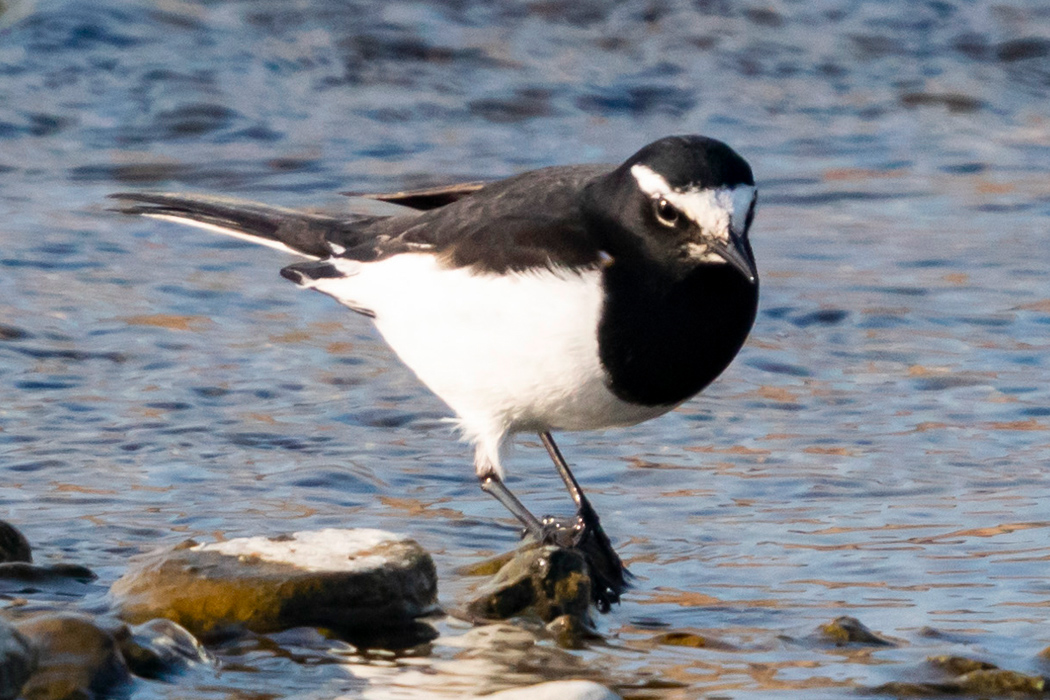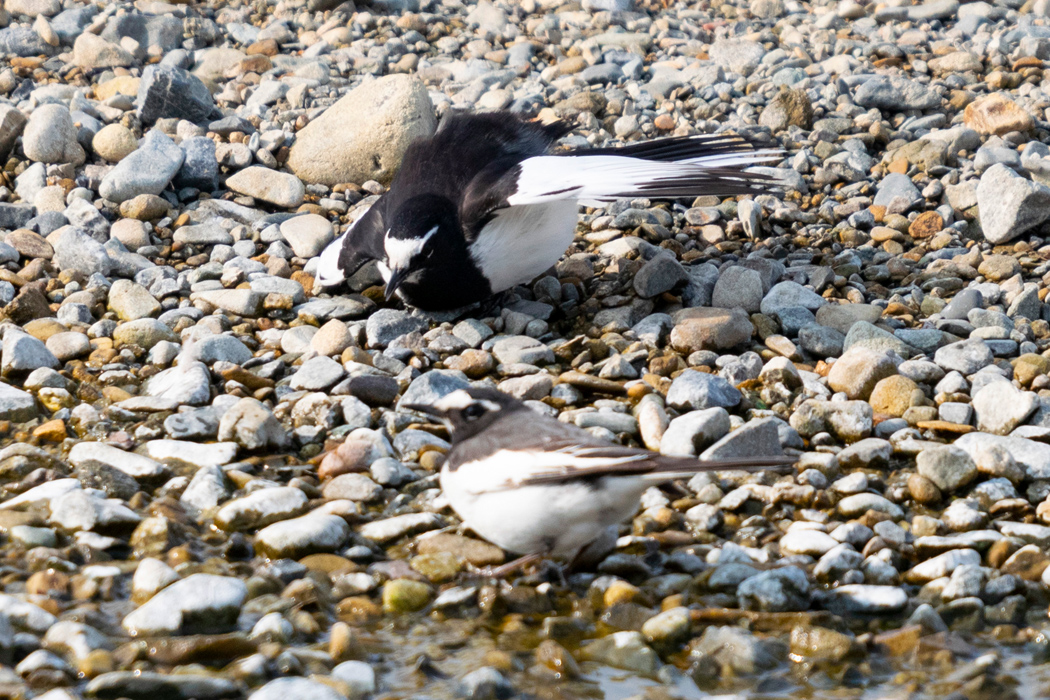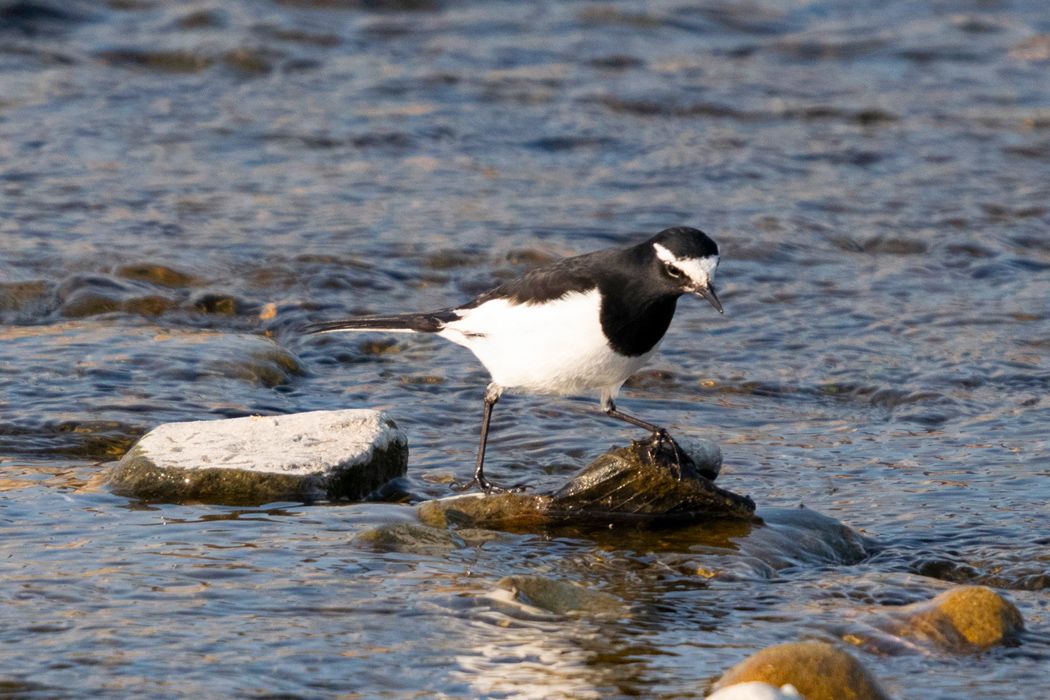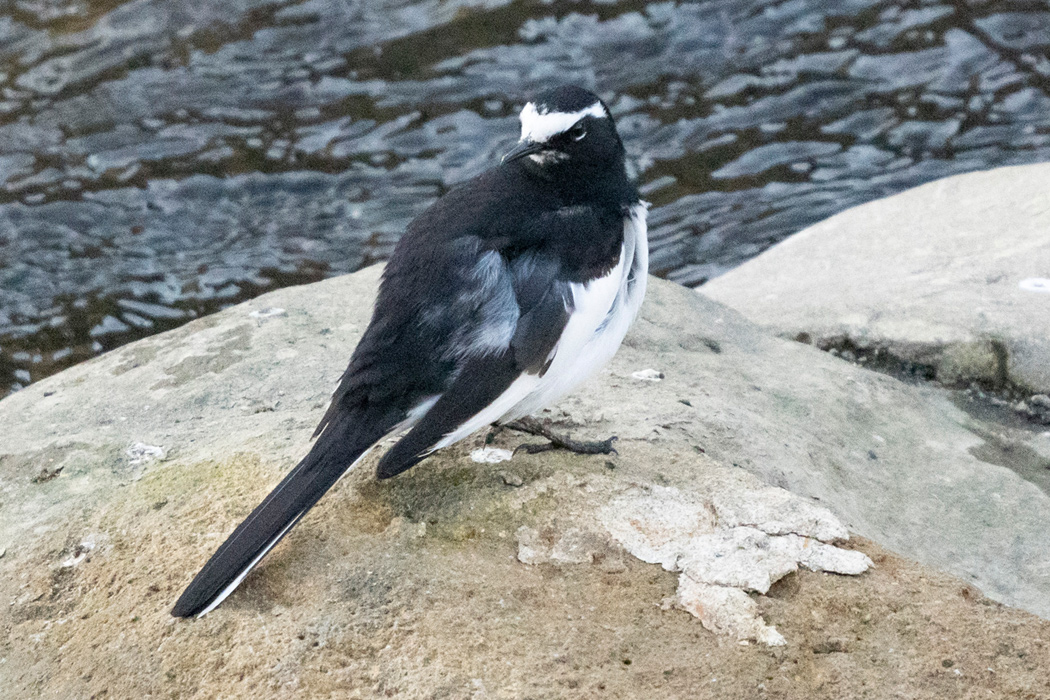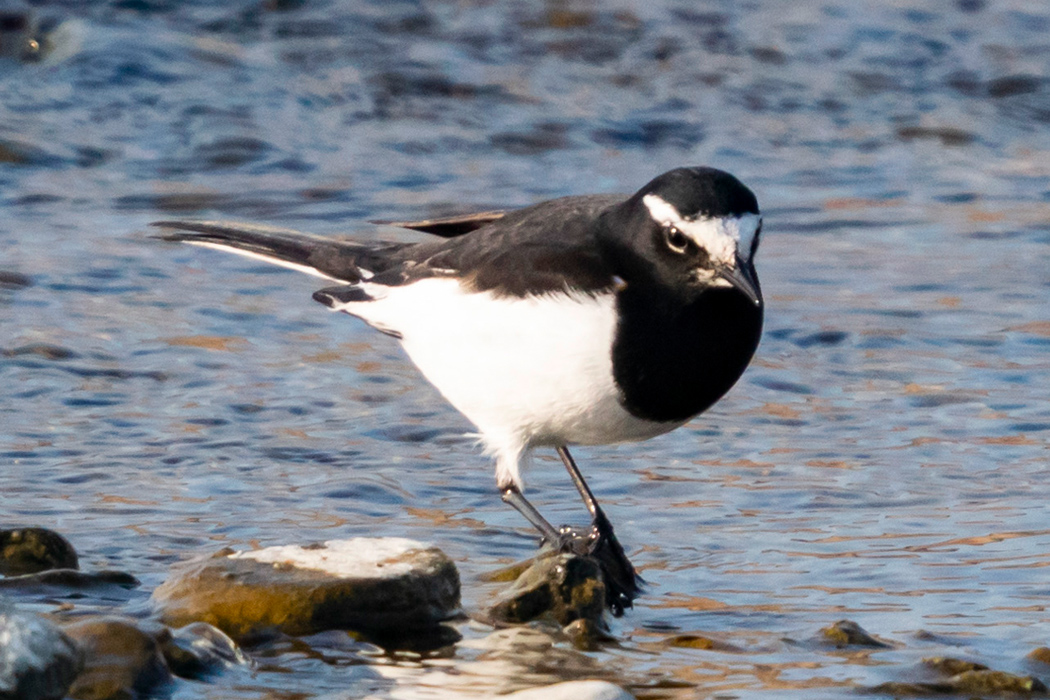
Japanese Wagtail
The contrast of black and white is strong.
| Scientific name | Motacilla grandis |
| English name | Japanese Wagtail |
| Japanese name | 背黒鶺鴒 |
| Classification | Aves |
| Classification details | Passeriformes Motacillidae |
| Full length | 21cm |
| Distribution | All over Japan |
Characteristics
A black wagtail from the head to the back. It's very similar to White Wagtail, but you can tell by the color under your eyes.Japanese Wagtails are black under the eyes all over the cheeks, while White Wagtails are black only under the eyes and white cheeks. For this reason, it is possible to distinguish the "total blackness" at first glance.
It's often near rivers, screaming along the waterfront and waving its tail up and down.
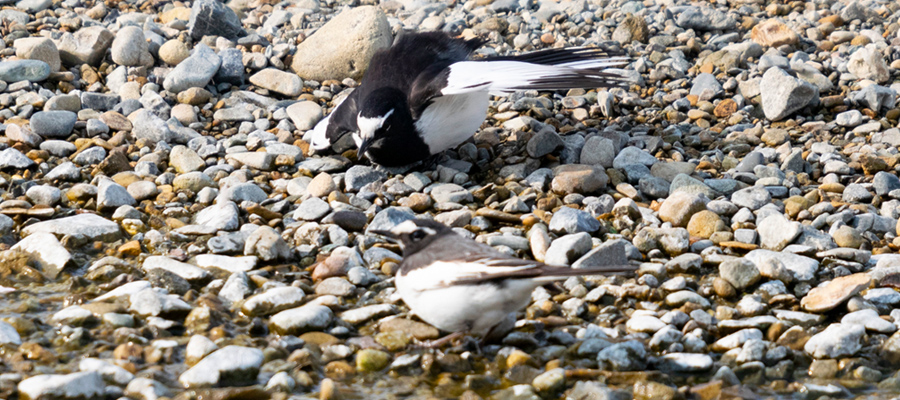
Ecology
It lives mainly in watersides and searches for food in riverbanks and shallow waters. Acts as a single bird, or as a pair, and threatens when another wagtail enters the territory. Nests are formed on riverbanks and breed twice a year. Crow in various voices while walking in the river. The trajectory of the flight is also characteristic, and once it flaps and gains propulsive force, it becomes thin and inertial for a while.
Habitat
Taken in the shallow water of Asakawa River, Hachioji city. We often see it along the Asakawa River. It sounds good with a loud voice and jumps up to about 10 meters. Sometimes males open their wings and squeal while courting females. It doesn't scare humans so much, and it can even reach in front of the eyes sitting on the riverbank.
Pictures
Introducing a picture of Japanese Wagtail.
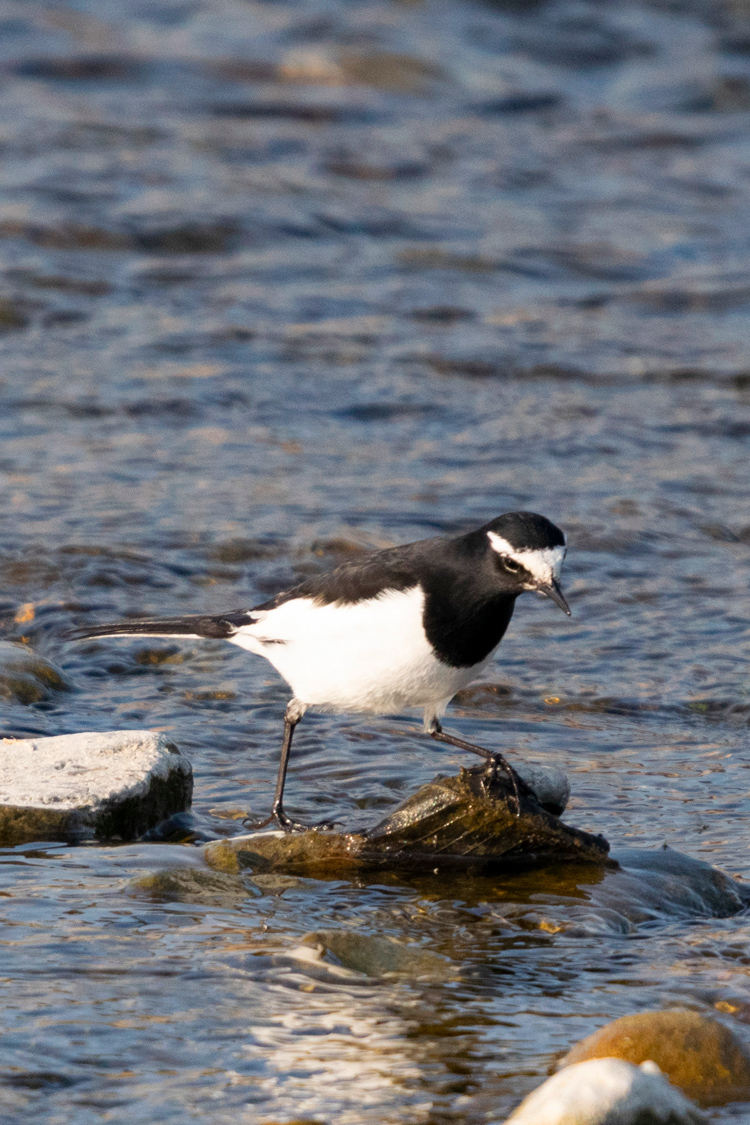
Picture book

Oberonia japonica
The drooping inflorescence looks like a string.......ead more.

Mallard
The male's head is bright green.......ead more.

Eurasian skylark
A spring bird popular all over the world.......ead more.

Common Pheasant
The national bird of Japan that is familiar to Momotaro.......ead more.

Grey Wagtail
A wagtail with a distinctive yellow color that can be recognized at a glance.......ead more.
